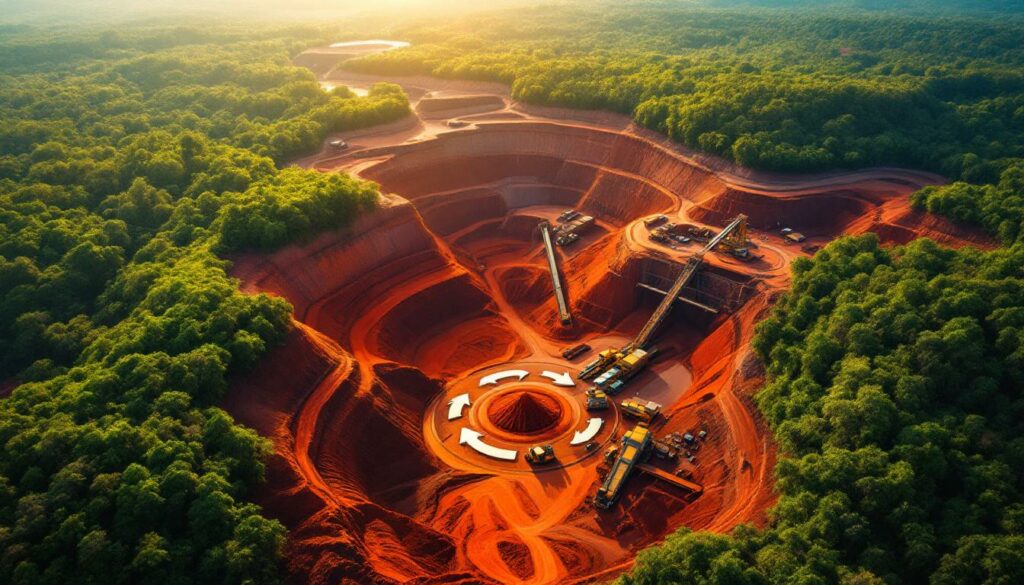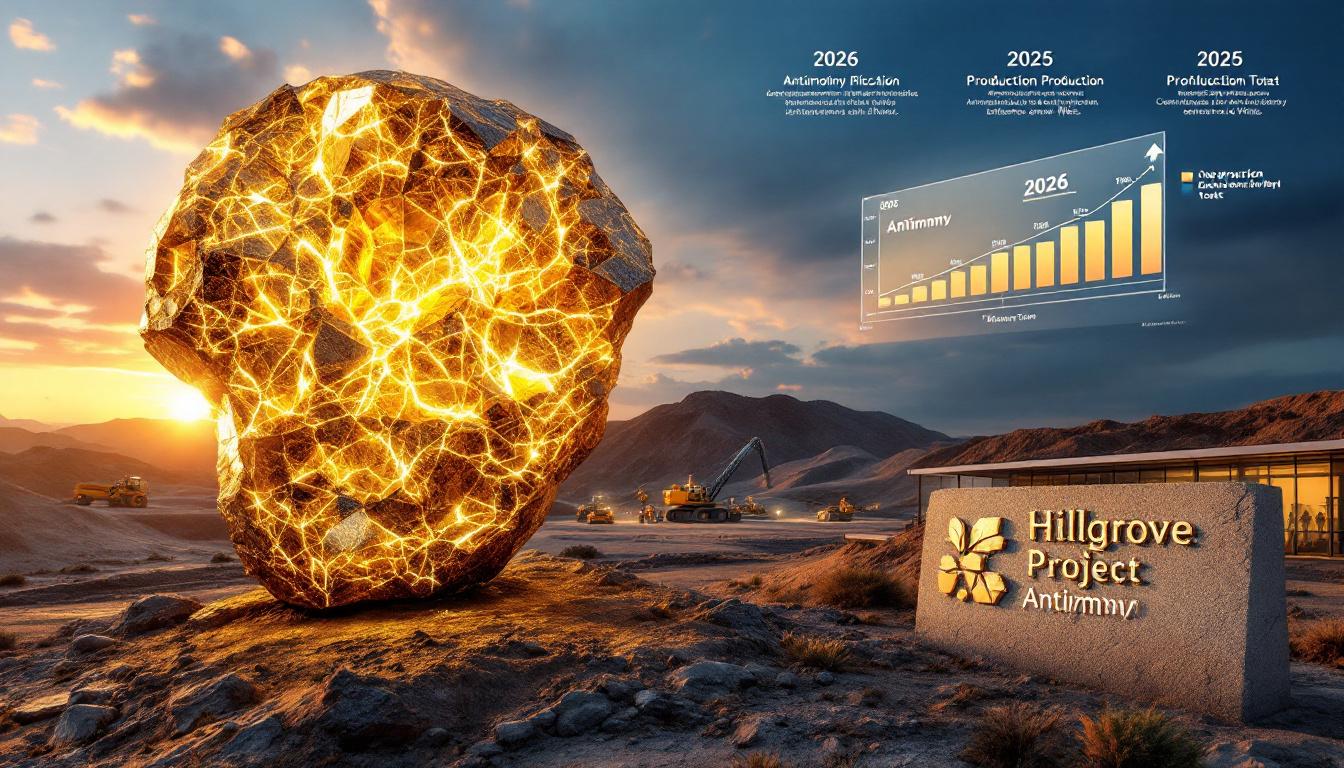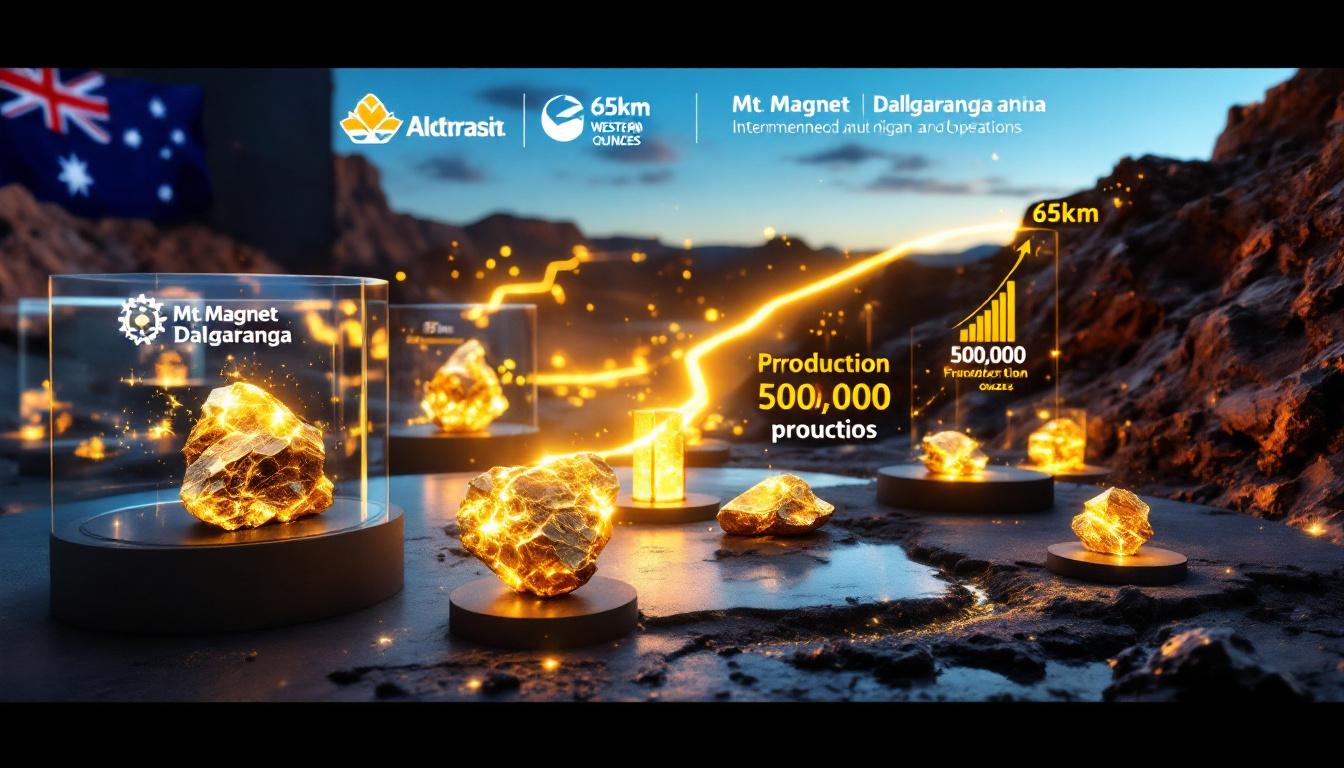Vale to End Water Use in Iron Ore Processing at Carajás by 2027
Vale's ambitious plan to eliminate water from iron ore processing at the Carajás complex by 2027 represents a significant shift in mining sustainability practices. This comprehensive transformation aims to revolutionize operations at one of the world's largest iron ore mining facilities, setting new standards for environmental responsibility in the mining industry evolution.
How is Vale Transforming Iron Ore Processing at Carajás?
Vale is undertaking a remarkable transformation at its Carajás mining complex in northern Brazil, working toward complete elimination of water in iron ore processing by 2027. This initiative represents one of the most significant sustainability shifts in the global mining industry, particularly given Carajás' position as a cornerstone of global iron ore price trends.
According to Mining Technology, Vale has already implemented dry processing across 90% of its Northern System operations, with the remaining 10% scheduled for transition by the end of 2027. This systematic approach demonstrates Vale's commitment to fundamentally changing how iron ore is processed at scale.
"By end-2027 they will be 100% dry. The Northern System will be 100% on natural moisture," stated Gildiney Sales, Vale director, as reported by Mining Technology in June 2025.
The scale of this transformation is particularly noteworthy considering that the Carajás complex produced 177.5 million tonnes of iron ore in 2024—more than half of Vale's total production. Implementing water-free processing at this volume makes Vale's initiative not just environmentally significant but technically groundbreaking.
Vale's Dry Processing Initiative: What's the Timeline?
The Current State of Dry Processing
Vale has made substantial progress in its journey toward water-free iron ore processing. Currently, 90% of Vale's Northern System operations already utilize dry processing methods, according to Mining Technology reporting from June 2025. This represents the culmination of years of technological development and operational transitions.
The company has established a clear timeline for completing this transition, with the remaining 10% scheduled to convert to dry processing by the end of 2027. This phased approach allows Vale to maintain production levels while methodically implementing new systems.
Carajás' significance in this transition cannot be overstated. With production of 177.5 million tonnes of iron ore in 2024—accounting for over half of Vale's total production—the complete conversion of this massive operation represents a watershed moment in mining sustainability.
Environmental and Operational Benefits
The environmental benefits of Vale's water elimination initiative are comprehensive:
- Complete elimination of tailings generation from iron ore processing
- No need for new dam construction, reducing both capital expenditure and environmental risk
- Significant reduction in water consumption in a traditionally water-intensive industry
- Enhanced environmental sustainability profile appealing to ESG-focused investors and stakeholders
From an operational perspective, the transition offers Vale numerous advantages:
- Streamlined processing workflows with fewer inputs to manage
- Lower long-term maintenance requirements for water management infrastructure
- Reduced environmental compliance costs and regulatory risks
- Improved operational efficiency through process simplification
Why is Vale Eliminating Water from Iron Ore Processing?
Environmental Risk Reduction
The elimination of water from iron ore processing addresses several critical environmental risks:
- Eliminates tailings dam failure risks — a particularly sensitive issue for Vale following past incidents
- Reduces water consumption in an increasingly water-stressed global mining industry
- Minimizes potential for water contamination from processing activities
- Aligns with global sustainability expectations for responsible mining operations
This initiative is especially significant given growing investor scrutiny of mining companies' environmental practices. By eliminating water usage, Vale is proactively addressing one of the industry's most significant environmental vulnerabilities.
Operational Advantages
Beyond environmental benefits, Vale's water elimination strategy delivers several operational advantages:
- Streamlined processing workflow with fewer inputs and variables to manage
- Lower maintenance requirements for water-related infrastructure
- Reduced environmental compliance costs and regulatory complexities
- Improved operational efficiency through process simplification
These operational benefits translate to long-term cost savings and operational resilience, positioning Vale more competitively in the global iron ore miner demand while enhancing its sustainability credentials.
How Does Dry Processing Technology Work?
Technical Implementation
Vale's dry processing approach represents a significant departure from traditional wet concentration methods. Key technical elements include:
- Processing based on the natural moisture content of the ore rather than adding water
- Deployment of advanced screening and sorting technologies to separate ore effectively
- Elimination of water-intensive concentration processes traditionally used in iron ore beneficiation
- Implementation of specialized equipment for dry separation methods capable of maintaining product quality
This technical approach leverages the natural characteristics of Carajás' high-grade iron ore deposits, which contain sufficient natural moisture to enable effective processing without additional water input.
Industry Innovation Context
Vale's implementation of dry processing at Carajás represents pioneering innovation in several respects:
- First large-scale adoption for a major iron ore operation of this magnitude
- Technological adaptation specifically engineered for high-volume production
- Engineering solutions to maintain product quality without traditional wet processing
- Scalable implementation demonstrating feasibility for global adoption
The success of this initiative could significantly influence industry standards, potentially accelerating the adoption of similar approaches by other major iron ore producers seeking to enhance their environmental credentials while reducing operational risks.
What is Vale's Circular Mining Strategy?
The Gelado Project: Turning Waste into Value
The Gelado Project exemplifies Vale's commitment to circular mining principles by repurposing historical waste:
- Repurposing tailings from the Gelado dam, which has been in operation since 1985
- Production forecast to double in 2026 compared to 2025 levels
- Estimated output of approximately 5 million tonnes of pellet feed in 2026
- Projected production increase to 6 million tonnes in 2027
This initiative transforms what was once considered waste into valuable production input, simultaneously addressing historical environmental liabilities while generating additional revenue streams.
Strategic Circular Mining Goals
Vale has established ambitious targets for its circular mining initiatives:
- Target of 10% annual production from "circular mining" by 2030
- Integration of waste reutilization into core business model rather than as supplementary activities
- Expansion of pellet feed production from mine waste across multiple operations
- Development of innovative processing technologies specifically for previously discarded materials
These goals position Vale at the forefront of the mining industry's transition toward more sustainable and resource-efficient operational models, potentially creating a competitive advantage in ESG-conscious markets.
What Challenges is Vale Facing in Its Sustainability Transition?
Power Constraints for Nickel Production
While Vale advances its water elimination initiative, it faces challenges in other sustainability projects:
- Brazilian power grid operator ONS denied Vale's request for increased power consumption
- Affects $555 million (3.08 billion reais) expansion project at the Onça Puma nickel complex
- New furnace operation delayed due to electricity supply limitations
- Highlights infrastructure constraints affecting Brazil's mining sector development
This situation illustrates how even well-funded sustainability initiatives can face unexpected hurdles from external infrastructure limitations, requiring companies to develop flexible implementation strategies.
Balancing Multiple Sustainability Initiatives
Vale faces several challenges in coordinating its various sustainability programs:
- Coordinating water elimination with other environmental projects to maximize synergies
- Maintaining production levels during transition periods to meet market commitments
- Addressing technical challenges in implementation across diverse operational contexts
- Managing capital allocation between competing sustainability priorities
Successfully navigating these challenges requires sophisticated project management and a clear sustainability roadmap that accounts for potential implementation hurdles.
What is the Global Significance of Vale's Water Elimination Plan?
Industry Leadership and Benchmarking
Vale's initiative at Carajás carries significant implications for the global mining industry:
- Setting new standards for sustainable mining practices at unprecedented scale
- Potential influence on industry-wide adoption of dry processing technologies
- Demonstration of large-scale feasibility for water-free processing in iron ore operations
- Creating new benchmarks for environmental performance in mining operations
As one of the world's largest iron ore producers, Vale's successful implementation could accelerate the adoption of similar approaches by competitors seeking to maintain market position in an increasingly sustainability-focused environment.
Market and Stakeholder Implications
The water elimination initiative offers Vale several strategic advantages:
- Environmental risk reduction appealing to investors increasingly concerned with ESG factors
- Potential competitive advantage in sustainability-focused markets and with eco-conscious customers
- Alignment with ESG (Environmental, Social, Governance) expectations from stakeholders
- Reduced regulatory and reputational risks associated with water management
These market implications extend beyond environmental benefits to potentially reshape competitive dynamics in the global iron ore market, particularly as sustainability criteria become increasingly important in purchasing decisions.
What is the Carajás Mining Complex?
Scale and Significance
The Carajás mining complex represents one of the most significant mineral assets globally:
- World's largest open-pit iron ore mining complex by production volume
- Located in Pará state, northern Brazil in the eastern Amazon region
- Key contributor to global iron ore supply, particularly for high-grade ores
- Strategic importance to Vale's production portfolio and Brazil's export economy
The scale of operations at Carajás makes Vale's water elimination initiative particularly significant, as it demonstrates the feasibility of sustainable practices even at the largest operational scales.
Production Impact
Carajás plays a central role in global iron ore markets:
- Accounts for more than 50% of Vale's total iron ore production
- Central to Brazil's mining sector and export economy
- Major global supplier of high-quality iron ore with relatively high iron content
- Critical to steel production supply chains worldwide
This production significance amplifies the potential impact of Vale's sustainability initiatives, as improvements at Carajás can substantially influence global industry standards and iron ore forecast insights.
FAQ: Vale's Water-Free Iron Ore Processing
How will eliminating water impact iron ore quality?
Vale has engineered its dry processing methods to maintain product quality while eliminating water usage. The company has gradually implemented these technologies across 90% of its Northern System operations, demonstrating that quality standards can be maintained through properly designed dry processing systems.
The natural characteristics of Carajás' high-grade iron ore deposits, which contain relatively high iron content and favorable mineralogy, facilitate effective processing without additional water input. Advanced screening and sorting technologies have been developed specifically to maintain quality parameters within customer specifications.
Expert Insight: Vale's gradual implementation approach has allowed for continuous quality monitoring and process refinement, ensuring that the transition to dry processing doesn't compromise the premium quality that Carajás ore is known for in global markets.
What environmental benefits will result from water elimination?
The primary environmental benefits include:
- Elimination of tailings generation, removing a major source of environmental risk
- Removal of dam failure risks, a particularly sensitive issue for the mining industry
- Significant water conservation in traditionally water-intensive operations
- Reduced environmental footprint across multiple impact categories
This approach also eliminates the need for tailings management infrastructure and reduces potential contamination risks associated with traditional processing methods. The environmental benefits extend beyond Vale's immediate operations to potentially influence industry standards globally.
How does this initiative compare to industry standards?
Vale's commitment to 100% dry processing at Carajás positions the company as an industry leader in sustainable mining practices. While dry processing is used in various mining operations globally, implementing it at this scale for iron ore processing represents an advanced application of the technology.
Most major iron ore producers continue to rely on water-intensive concentration processes, particularly for lower-grade deposits. Vale's initiative demonstrates the technical and economic feasibility of water-free processing at scale, potentially establishing new industry benchmarks for environmental performance.
What investments are required for this transition?
While specific investment figures for the Carajás water elimination project weren't disclosed in available sources, the initiative requires significant capital expenditure for:
- Equipment upgrades and replacements
- Process redesign and engineering
- Technological implementation and testing
- Operational retraining and transition management
However, these investments are expected to yield long-term operational cost savings through reduced water management expenses, elimination of tailings dam construction and maintenance, and lower environmental compliance costs.
Important Note: The transition to dry processing represents a substantial upfront investment but offers significant long-term operational, environmental, and reputational benefits that may ultimately enhance Vale's competitive position in global markets.
Vale's water elimination initiative at Carajás represents a significant advancement in sustainable mining practices, demonstrating that environmental responsibility and operational efficiency can be achieved simultaneously at scale. As the project progresses toward its 2027 completion target, it will likely influence industry standards and stakeholder expectations for responsible resource development, including mine reclamation innovations.
Want to Stay Ahead of Major Mineral Discoveries?
Discover how real-time alerts on significant ASX mineral discoveries could transform your investment strategy with Discovery Alert's proprietary Discovery IQ model. Explore our dedicated discoveries page to understand how historic mineral finds have generated substantial returns for early investors.




